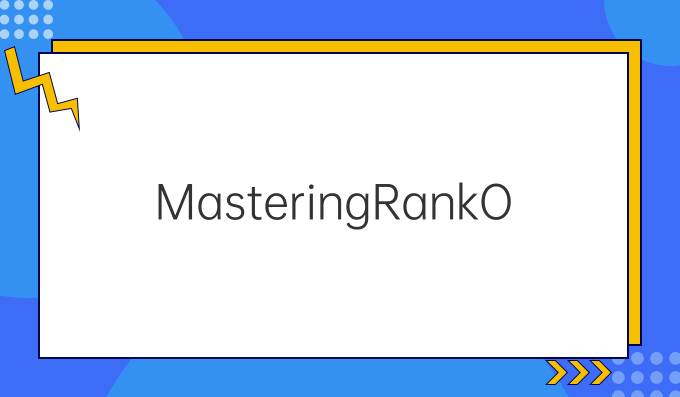
4007-702-802
Follow us on:



本文来源:ManLang 发布时间:2024-09-18 分享:

Abstra: In the evolving landscape of digital marketing, mastering rank optimization is essential for securing maximum keyword visibility. This article delves into strategic methodologies that elevate keyword performance, focusing on four critical aspes: understanding search intent, optimizing onpage elements, harnessing offpage techniques, and leveraging analytics for continuous improvement. Each seion provides aionable insights, illustrating how effeive keyword optimization not only enhances search engine rankings but also drives higher traffic and engagement. By implementing these strategies, marketers can create a robust organic presence, conneing with target audiences more effeively while navigating the complexities of search algorithms.
One of the most critical aspes of keyword strategy is understanding search intent. Search intent refers to the purpose behind a user's search query. There are generally four types of search intent: informational, navigational, transaional, and commercial investigation. By identifying the specific intent behind keywords, marketers can craft content that meets users' needs more precisely, thereby increasing the chances of engagement and conversion.

For example, someone searching for "best running shoes" might be in a commercial investigation phase, seeking reviews and comparisons before making a purchase. In contrast, a query like "how to choose running shoes" indicates an informational intent. Understanding these nuances allows marketers to create targeted content that not only ranks well but also resonates with users.
To analyze search intent effeively, tools like Google Search Console and keyword research tools (e.g., SEMrush, Ahrefs) can provide insight into what users are looking for. This data informs content creation, ensuring that marketers are not just chasing highvolume keywords but are strategically aligning their efforts with what users genuinely want.
Onpage optimization encompasses all the strategies used to ensure that individual pages of a website are optimized for relevant keywords. This includes title tags, meta descriptions, headers, and body content. Each of these elements plays a crucial role in helping search engines understand the context and relevance of the content.
Title tags are particularly influential; they should be concise yet descriptive, incorporating primary keywords naturally. Similarly, meta descriptions should provide a compelling summary of the page content, enticing users to click through from search results. Including keywords subtly in headers (H1, H2, H3) not only reinforces topic relevance but also improves readability for both users and search engines.
Moreover, internal linking can significantly enhance keyword performance. Linking to relevant content within your own site helps distribute page authority and guides users through valuable resources. A wellstruured internal linking strategy also improves crawlability, making it easier for search engines to index content effeively, thus impaing overall rankings positively.
Offpage optimization focuses on all the aions taken outside of your website that can improve its visibility and ranking in search results. The most notable method is link building, which involves acquiring backlinks from other reputable sites. These backlinks a as votes of confidence, signaling to search engines that your content is trustworthy and authoritative.
Content marketing, including guest blogging, can be an excellent strategy for building backlinks. By producing highquality, relevant content on other sites, you not only gain backlinks but can also drive referral traffic. Furthermore, leveraging social media platforms to share your content increases its reach, leading to more potential backlinks and engagement.
Additionally, establishing relationships with influencers and industry leaders can amplify your reach. Partnering with these figures to create coauthored content or featuring them in interviews can lead to increased visibility and credibility. Their endorsement can also drive more organic traffic to your content, further enhancing your keyword performance.
The final aspe of mastering rank optimization is continually analyzing performance metrics to refine strategies. Tools like Google Analytics and Google Search Console provide valuable data that can inform your keyword strategy. By monitoring traffic patterns, user behavior, and conversion rates, marketers can assess which keywords are driving results and which need further optimization.
A/B testing different elements, such as title tags or meta descriptions, can provide insights into what resonates best with your audience. This iterative approach allows marketers to adapt to changing user preferences and search behaviors, ensuring that content remains relevant and effeive over time.
Additionally, keeping an eye on competitor analysis is crucial. Understanding what keywords competitors are ranking for and their strategies can provide ideas for improvement or new opportunities to pursue. By leveraging comprehensive analytics and staying informed about the competitive landscape, marketers can ensure their keyword performance is continuously evolving and improving.
Summary: Mastering rank optimization requires a multifaceted approach that begins with a solid understanding of search intent, followed by effeive onpage and offpage strategies, and concludes with ongoing analytical assessments. By focusing on these key aspes, marketers can significantly enhance their keyword performance, achieving maximum visibility and driving sustainable traffic to their websites. Implementing these strategies ensures that businesses not only attra users but also meet their needs effeively, fostering deeper engagement and higher conversion rates.
猜您感兴趣的内容
Mastering Content Marketing: Strategies for Engaging Audiences and Driving Conversion
2025-04-16Maximizing ROI with Expert Bid Management: A Comprehensive Guide to 竞价托管 Strategies for Digital Adve
2025-04-16Boost Your Online Visibility: Mastering SEM Strategies for Effeive SEO Success
2025-04-16Boost Your Business with Expert SEO Optimization Strategies Tailored for Success
2025-04-16Exploring the Key Components of Content Marketing: Strategies, Tools, and Best Praices for Effeive A
2025-04-16Crafting Culinary Identities: Innovative Strategies for Restaurant Brand Development and Market Posi
2025-04-16Unlocking Engagement: The Ultimate Guide to Content Marketing Software for Business Growth
2025-04-16Advanced Strategies for Enhancing SEM Network Optimization: Leveraging Data-Driven Insights and AI T
2025-04-16您也许还感兴趣的内容
Building an Effeive Website: A Comprehensive Guide to Website Development
2024-05-15Unlocking SEO Success: A Comprehensive Outsourcing Solution for Your Business Growth
2025-01-04Unlocking SEO Success: A Comprehensive Guide to Optimizing Your Website for Top Rankings
2025-01-17WebCraft Solutions: Crafting Websites for Your Digital Success
2025-01-07Maximizing Your Online Presence: Effeive Strategies for Outsourcing Keyword Ranking Optimization
2024-12-01Unlocking SEO Success: A Comprehensive Guide to Keyword Optimization Strategies
2025-01-01Top Conference System Brands: A Comprehensive Ranking and Analysis for 2024
2024-12-16